NEW
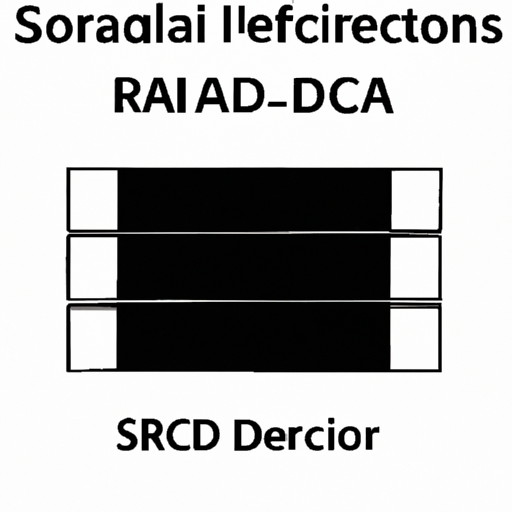
Core Functional Technology of DIACs and SIDACs 1. DIAC (Diode for Alternating Current)
- **Structure**: A DIAC is a two-terminal semiconductor device that operates in a bidirectional manner. It has a breakover voltage, which is the threshold voltage that must be exceeded for the device to conduct.
- **Operation**: The DIAC remains in a non-conducting state until the voltage across it reaches the breakover voltage. Once triggered, it switches to a conducting state and remains on until the current falls below a certain level, at which point it turns off. This behavior allows DIACs to be used in AC applications where the polarity of the voltage can change.
- **Applications**: Common applications include:
- **Light Dimmers**: Used to control the brightness of lights by adjusting the phase angle of the AC waveform.
- **Motor Speed Controls**: Employed in fan speed controllers to vary the speed of AC motors.
- **Over-voltage Protection**: Protects circuits from voltage spikes by clamping the voltage to a safe level. 2. SIDAC (Silicon Diode for Alternating Current)
- **Structure**: Similar to a DIAC, a SIDAC is also a two-terminal device but is designed to handle higher power levels. It has a more robust construction that allows it to manage larger currents and voltages.
- **Operation**: SIDACs can be triggered by a voltage spike and will conduct until the current drops below a certain threshold, at which point they turn off. This makes them suitable for applications requiring high power handling.
- **Applications**: Common applications include:
- **Surge Protection**: Used in devices to protect sensitive electronics from voltage spikes.
- **Over-voltage Protection**: Integrated into power supply circuits to clamp voltage levels.
- **Timing Circuits**: Employed in applications requiring precise timing control of AC signals. Application Development Cases 1. Light Dimming Circuits
- **Description**: DIACs are integral to light dimmers, where they work in conjunction with TRIACs to control the phase angle of the AC waveform. This allows for smooth dimming of incandescent bulbs.
- **Effectiveness**: The use of DIACs enables flicker-free dimming, enhancing user comfort and energy efficiency. 2. Motor Speed Control
- **Description**: In applications like ceiling fans and HVAC systems, DIACs are used to adjust the speed of AC motors by controlling the phase angle of the AC supply.
- **Effectiveness**: This method provides efficient and precise control over motor speed, improving performance and energy consumption. 3. Surge Protection Devices
- **Description**: SIDACs are commonly used in surge protection devices to safeguard sensitive electronic equipment from voltage spikes. When a surge occurs, the SIDAC conducts and diverts excess current.
- **Effectiveness**: This application is crucial for preventing damage to electronic components, ensuring reliability and longevity in various devices. 4. Over-voltage Protection
- **Description**: Both DIACs and SIDACs can be integrated into circuits designed to protect against over-voltage conditions. They clamp voltage levels to prevent damage to downstream components.
- **Effectiveness**: This application is vital in industrial and consumer electronics, where voltage spikes can occur due to switching transients or lightning strikes. 5. Timing Circuits
- **Description**: SIDACs can be utilized in timing circuits where precise control over the timing of events is required. They can be triggered by specific voltage levels to control the timing of AC signals.
- **Effectiveness**: This application is beneficial in automation and control systems, providing reliable timing without the need for complex circuitry. ConclusionDIACs and SIDACs are fundamental components in modern electronic circuits, particularly in applications involving AC signals. Their ability to handle high voltages and currents, combined with their simple triggering mechanisms, makes them effective for a wide range of applications, from lighting control to surge protection. As technology continues to advance, the development of new applications for these devices is expected to expand, further enhancing their utility in electronic design. Their versatility and reliability make them indispensable in both consumer and industrial electronics.

Application Development in Pin Configurable/Selectable Oscillators for CFR-25JB-52-1M6: Key Technologies and Success StoriesPin configurable/selectable oscillators, such as the CFR-25JB-52-1M6, are pivotal in modern electronic design, providing the flexibility to adapt to various frequency requirements across multiple applications. Below is a detailed overview of the key technologies that underpin these oscillators and notable success stories that highlight their impact in various industries.
Key Technologies1. Programmable Frequency Generation2. Low Power Consumption3. Temperature Stability4. Integrated Circuit Technology5. Digital Control Interfaces6. Multi-Mode Operation1. Consumer Electronics2. Automotive Applications3. IoT Devices4. Telecommunications5. Medical Devices Success Stories ConclusionPin configurable/selectable oscillators like the CFR-25JB-52-1M6 are integral to the evolution of modern electronics, offering unparalleled flexibility, efficiency, and reliability across a wide range of applications. Their successful integration into consumer electronics, automotive systems, IoT devices, telecommunications, and medical equipment underscores their versatility and significance in driving technological innovation. As the demand for adaptable and energy-efficient solutions continues to rise, the development and application of these oscillators are poised to expand, paving the way for new success stories in the future.
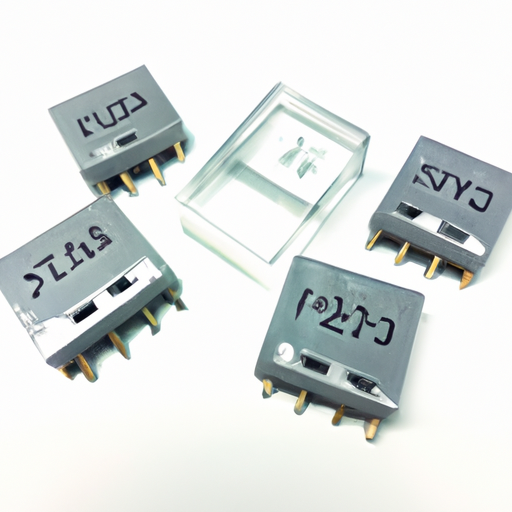
Overview of Crystal, Oscillator, and Resonator AccessoriesCrystal oscillators, resonators, and their accessories are fundamental components in electronic circuits, providing stable frequency references essential for timing and synchronization. The CFR-50JB-52-1M6 is a specific model of crystal oscillator that showcases the capabilities of this technology. Below, we delve into the core functional technologies, applications, and development cases related to crystal oscillators and their accessories.
Core Functional Technologies1. Frequency Stability 2. Low Phase Noise 3. Temperature Compensation 4. Miniaturization 5. Integration with Other Components 1. Telecommunications2. Consumer Electronics3. Automotive Systems4. Industrial Automation5. Medical Devices Application Development Cases ConclusionThe CFR-50JB-52-1M6 crystal oscillator exemplifies advancements in crystal technology, offering high stability, low phase noise, and a compact design. Its applications span various industries, including telecommunications, consumer electronics, automotive, industrial automation, and medical devices. As technology continues to evolve, the role of crystal oscillators and their accessories will remain pivotal in developing reliable and efficient electronic systems, driving innovation across multiple sectors.
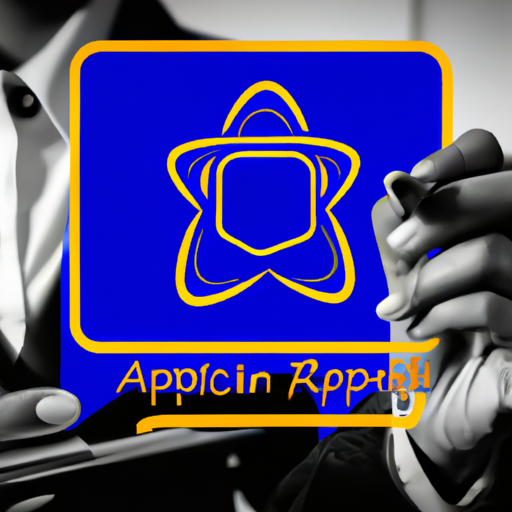
Application Development in Resonators for CFR-25JB-52-1K6: Key Technologies and Success StoriesApplication development in resonators, particularly for components like the CFR-25JB-52-1K6, involves leveraging key technologies and methodologies to create effective solutions across various fields, including telecommunications, automotive, and consumer electronics. The CFR-25JB-52-1K6 is a specific type of resistor, often used in applications requiring precision and reliability. Here’s an overview of key technologies and success stories related to resonators and similar components:
Key Technologies1. Surface-Mount Technology (SMT)2. High-Frequency Resonators3. Digital Signal Processing (DSP)4. Simulation and Modeling Software5. Automated Testing and Quality Assurance6. Integration with IoT1. Telecommunications2. Consumer Electronics3. Automotive Applications4. Medical Devices5. Industrial Automation Success Stories ConclusionThe development of applications using resonators like the CFR-25JB-52-1K6 is driven by advancements in technology and the growing demand for precision and reliability across various industries. By leveraging key technologies and learning from successful implementations, developers can create innovative solutions that meet the evolving needs of the market. As the demand for high-performance electronic components continues to grow, the role of resonators will remain critical in shaping the future of technology, enabling advancements in communication, consumer electronics, automotive systems, and beyond.
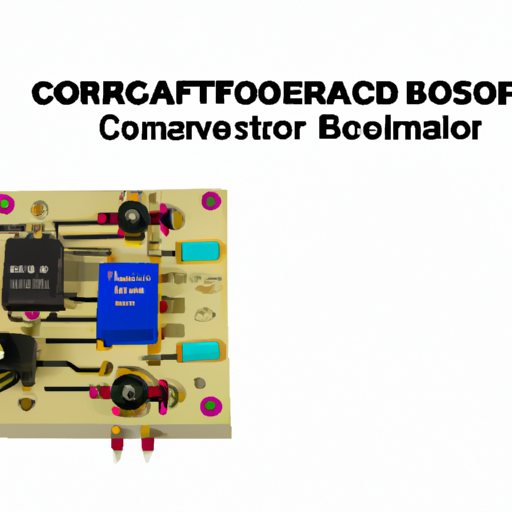
Overview of CFR-50JB-52-1K6 VCOsThe CFR-50JB-52-1K6 is a specific model of Voltage Controlled Oscillator (VCO) that exemplifies the core functional technology of VCOs. This model operates within a defined frequency range and is designed for various applications, particularly in communication and signal processing. Below, we delve deeper into the core functional technology of VCOs and explore specific application development cases that highlight their effectiveness.
Core Functional Technology of VCOs1. Basic Operation2. Types of VCOs3. Key Parameters4. Control Mechanisms1. Communication Systems2. Signal Processing3. Control Systems4. Test and Measurement Equipment5. Consumer Electronics Application Development Cases ConclusionThe CFR-50JB-52-1K6 VCO, like other VCOs, plays a pivotal role in modern electronic systems, enabling a diverse array of applications from communication to consumer electronics. Its ability to generate precise frequencies controlled by voltage makes it an invaluable component in both analog and digital systems. As technology continues to advance, VCOs are expected to evolve further, leading to enhanced performance, miniaturization, and greater integration into various applications, thereby driving innovation across multiple industries.
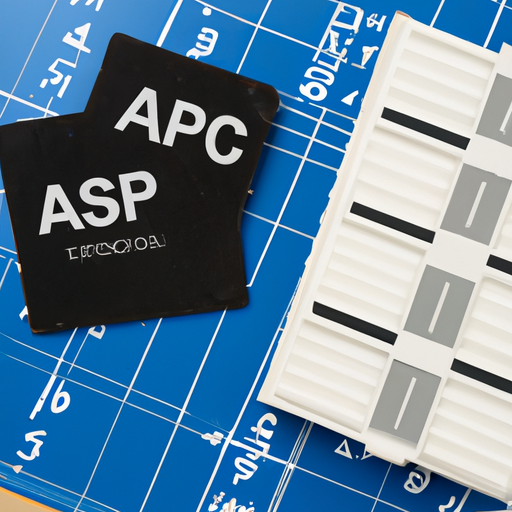
Application Development in Programmable Oscillators for CFR-50JB-52-1R6: Key Technologies and Success StoriesProgrammable oscillators, such as the CFR-50JB-52-1R6, are essential components in a wide range of applications, including telecommunications, consumer electronics, and industrial systems. Their ability to provide precise frequency generation and programmability makes them versatile for various use cases. Below are key technologies and success stories related to the application development of programmable oscillators like the CFR-50JB-52-1R6.
Key Technologies1. Digital Control and Programming:2. Phase-Locked Loop (PLL) Technology:3. Low Power Consumption:4. High Frequency Resolution:5. Integration with Microcontrollers:6. Temperature Compensation:1. Telecommunications:2. Consumer Electronics:3. Automotive Applications:4. Industrial Automation:5. Medical Devices: Success Stories ConclusionThe development and application of programmable oscillators like the CFR-50JB-52-1R6 have significantly transformed various industries by providing precise frequency generation, flexibility, and integration capabilities. As technology continues to advance, the role of programmable oscillators in emerging applications, such as IoT and smart systems, is expected to grow, leading to further innovations and success stories in the future. The adaptability and efficiency of these components will continue to drive advancements across multiple sectors, making them indispensable in the modern technological landscape.
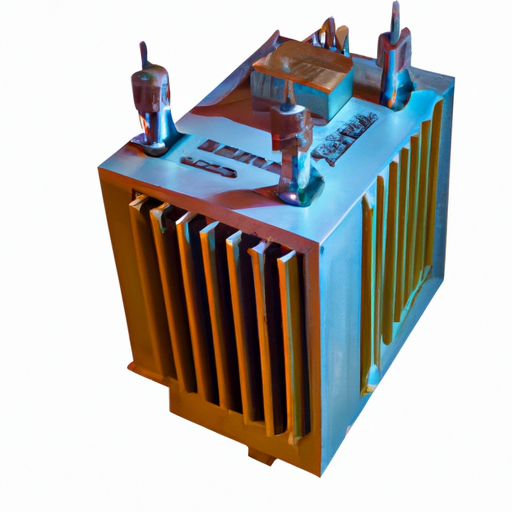
Overview of Power Transformers: CFR-50JB-52-1K5 and General InsightsPower transformers, including models like the CFR-50JB-52-1K5, are essential components in electrical power systems, facilitating the transmission and distribution of electricity across various applications. While specific documentation on the CFR-50JB-52-1K5 may be limited, we can explore the core functional technologies and application development cases relevant to power transformers in general.
Core Functional Technologies of Power Transformers1. Magnetic Core Design2. Winding Configuration3. Cooling Systems4. Tap Changers5. Protection and Monitoring1. Renewable Energy Integration2. Smart Grid Technologies3. Urban Infrastructure4. Industrial Applications5. Electric Vehicle Charging Stations6. Data Centers Application Development Cases ConclusionPower transformers, including models like the CFR-50JB-52-1K5, are integral to modern electrical systems, enabling efficient power transmission and distribution. Advances in technology, such as improved materials, smart monitoring systems, and integration with renewable energy sources, continue to enhance their performance and application scope. Understanding these core technologies and application cases is essential for engineers and stakeholders involved in power systems, ensuring that they can effectively design, implement, and maintain these critical components of the electrical infrastructure.
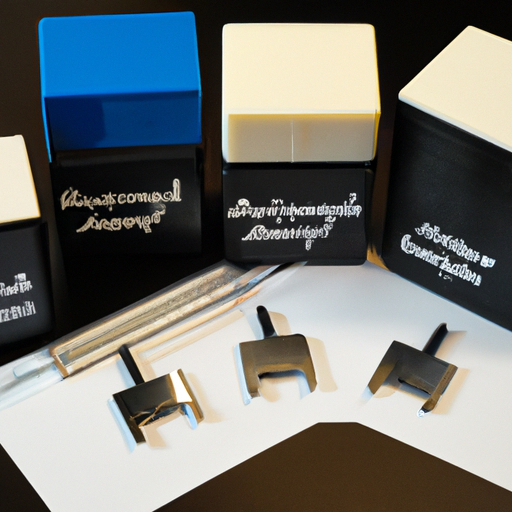
Application Development in Current Sense Transformers for CFR-50JB-52-1R5: Key Technologies and Success StoriesCurrent Sense Transformers (CSTs) are pivotal in modern electronic systems, particularly in power management and energy monitoring applications. The CFR-50JB-52-1R5 model exemplifies the capabilities of CSTs in providing accurate current measurements, electrical isolation, and enhanced safety. Below, we explore the key technologies that underpin the development of CSTs and highlight notable success stories that illustrate their impact across various sectors.
Key Technologies1. Magnetic Core Materials2. Winding Techniques3. Integrated Circuit (IC) Compatibility4. High-Frequency Operation5. Isolation and Safety Standards6. Digital Signal Processing (DSP)7. Miniaturization1. Smart Grid Applications2. Electric Vehicle (EV) Charging Stations3. Renewable Energy Systems4. Industrial Automation5. Consumer Electronics6. Home Automation Systems Success Stories ConclusionThe development and application of Current Sense Transformers like the CFR-50JB-52-1R5 are driven by advancements in materials, design techniques, and integration with digital technologies. Their versatility and reliability make them indispensable in a wide range of applications, from industrial automation to consumer electronics and renewable energy systems. As technology continues to evolve, the role of CSTs in enhancing energy efficiency and safety will only grow, leading to more innovative solutions in the future. The ongoing advancements in CST technology promise to further expand their applications, making them a cornerstone of modern electronic systems.
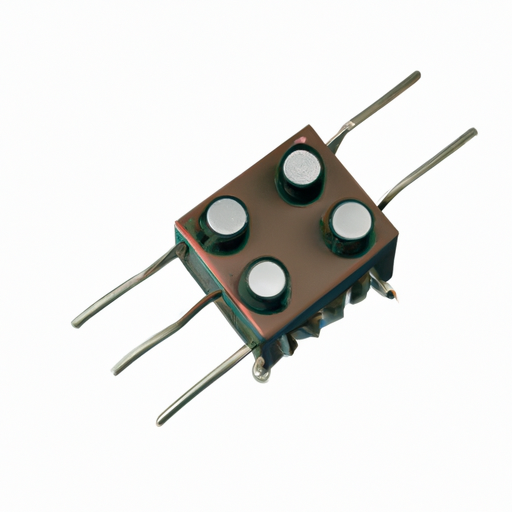
LT1213CS8 Audio Transformers: Core Functional Technologies and Application Development CasesAudio transformers, such as the LT1213CS8, are pivotal in audio signal processing, offering essential functionalities that enhance audio quality and system performance. Below, we delve into the core functional technologies and notable application development cases that highlight the effectiveness of audio transformers.
Core Functional Technologies1. Isolation 2. Impedance Matching 3. Signal Level Adjustment 4. Frequency Response 5. Low Distortion 6. Ruggedness and Reliability 1. Microphone Preamplifiers 2. Direct Injection (DI) Boxes 3. Guitar Amplifiers 4. Broadcasting 5. Home Audio Systems 6. Digital Audio Converters 7. Active Speakers Application Development Cases ConclusionThe LT1213CS8 and similar audio transformers are essential components in a wide range of audio applications, providing critical functions such as isolation, impedance matching, and signal level adjustment. Their versatility is evident across various settings, from professional audio equipment to consumer electronics, underscoring their importance in achieving high-quality audio performance. As technology continues to evolve, advancements in materials and design will further enhance the capabilities of audio transformers, ensuring their effectiveness in future applications.
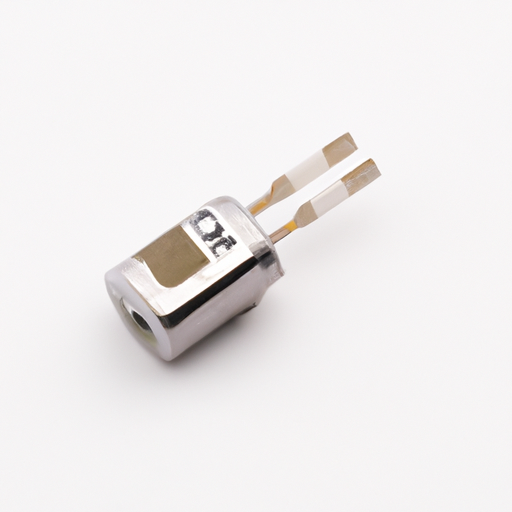
Overview of Joystick Potentiometers: CFR-25JB-52-1K3Joystick potentiometers, such as the CFR-25JB-52-1K3 model, are critical components in a wide range of applications, including gaming, robotics, and industrial machinery. This overview highlights the core functional technology, application development cases, and relevant resources for understanding and utilizing joystick potentiometers effectively.
Core Functional Technology1. Basic Operation2. Types of Joystick Potentiometers3. Electrical Characteristics4. Durability and Reliability1. Gaming Controllers2. Robotics3. Industrial Machinery4. Assistive Technology5. Simulation and Training1. Technical Papers2. Application Notes3. Case Studies4. Online Forums and Communities Application Development Cases Articles and Resources ConclusionJoystick potentiometers, such as the CFR-25JB-52-1K3, are versatile components essential for various applications, from gaming to industrial control systems. By understanding their core technology and exploring real-world applications, developers can effectively leverage these components in their projects, enhancing functionality and user experience.
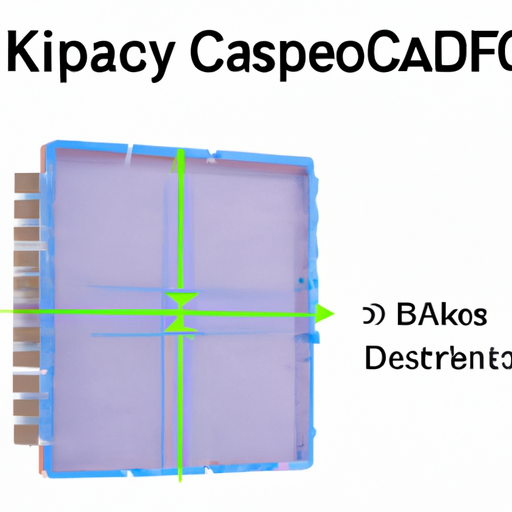
Application Development in Value Display Potentiometers for CFR-50JB-52-1K3: Key Technologies and Success StoriesValue Display Potentiometers, such as the CFR-50JB-52-1K3, play a crucial role in various electronic applications, enabling user interaction and control. These components allow users to adjust resistance values, which can be translated into outputs like volume control, brightness settings, and other adjustable parameters in electronic systems. Below is an overview of key technologies and success stories related to the application development of these potentiometers.
Key Technologies1. Digital Potentiometers2. Touch and Gesture Control3. Wireless Connectivity4. Haptic Feedback5. Robustness and Durability6. Smart Calibration1. Consumer Electronics2. Automotive Applications3. Medical Devices4. Industrial Automation5. Smart Home Devices Success Stories ConclusionThe application development of Value Display Potentiometers like the CFR-50JB-52-1K3 is rapidly evolving alongside technological advancements. The integration of digital interfaces, wireless connectivity, and user-friendly designs has opened new avenues for innovation across various industries. Success stories in consumer electronics, automotive, medical devices, and industrial automation underscore the significance of these components in creating responsive and intuitive user experiences. As technology continues to progress, the role of potentiometers in electronic applications is expected to expand, leading to even more innovative solutions that enhance user interaction and control.
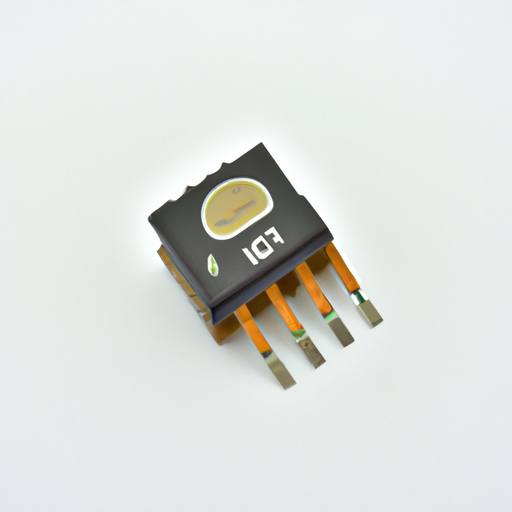
Core Functional Technology of Trimmer Potentiometers1. Adjustable Resistance: Trimmer potentiometers, such as the CFR-50JB-52-1R3, provide a variable resistance that can be manually adjusted. This feature is essential for calibrating circuits, allowing engineers to set precise values for voltage dividers, gain control, and other applications. The ability to fine-tune resistance values enhances the performance and accuracy of electronic devices.
2. Compact Design: The CFR-50JB-52-1R3 is designed with a compact footprint, making it ideal for space-constrained applications. Its small size allows for easy integration into densely populated circuit boards without sacrificing performance, which is crucial in modern electronics where space is often at a premium. 3. Durability and Reliability: Built to withstand various environmental factors, trimmer potentiometers are known for their durability. The CFR series, in particular, features robust construction that ensures long-term reliability, making them suitable for applications exposed to temperature fluctuations, humidity, and other challenging conditions.
4. Taper Options: Trimmer potentiometers are available in different taper options, including linear and logarithmic. This flexibility allows designers to select the appropriate response curve for their specific application needs, enhancing the functionality of the circuit.
5. Multi-turn Adjustment: Many trimmer potentiometers, including the CFR-50JB-52-1R3, offer multi-turn adjustments, which enable finer control over resistance settings. This feature is particularly beneficial in applications that require precise calibration, allowing for more accurate tuning of circuit parameters.
Application Development Cases1. Audio Equipment: Trimmer potentiometers are widely used in audio applications for adjusting volume levels, tone controls, and equalization settings. The CFR-50JB-52-1R3 can be integrated into high-fidelity audio equipment, ensuring accurate sound reproduction and allowing users to customize their listening experience.
2. Sensor Calibration: In sensor circuits, trimmer potentiometers are essential for calibrating output signals. For example, in temperature sensors, they can be adjusted to ensure that the output voltage accurately reflects the temperature being measured, thereby improving the accuracy of the sensor readings.
3. Power Supply Regulation: Trimmer potentiometers are commonly used in power supply circuits to set output voltage levels. By adjusting the resistance, engineers can fine-tune the voltage to meet specific requirements, ensuring stable operation of connected devices and preventing potential damage from voltage fluctuations.
4. Feedback Control Systems: In control systems, trimmer potentiometers are utilized to adjust feedback loops. This is critical in applications such as motor control, where precise adjustments can lead to improved performance and efficiency, enhancing the overall functionality of the system.
5. Test and Measurement Equipment: Trimmer potentiometers are integral to test and measurement devices for calibration purposes. They allow technicians to set reference levels accurately, ensuring that measurements are reliable and consistent, which is vital for quality control and testing processes.
6. Consumer Electronics: In consumer electronics, trimmer potentiometers are used in devices like televisions and radios for tuning and calibration. The CFR-50JB-52-1R3 can be integrated into these devices, providing users with the ability to easily adjust settings for optimal performance.
ConclusionTrimmer potentiometers, such as the CFR-50JB-52-1R3, are essential components in modern electronics, offering adjustable resistance in a compact and reliable form factor. Their versatility allows for a wide range of applications, from audio equipment to sensor calibration and power supply regulation. As technology continues to advance, the demand for precise control and calibration in electronic devices will only grow, solidifying the role of trimmer potentiometers as a critical element in future designs. Their ability to enhance performance, reliability, and user experience makes them invaluable in various electronic applications.
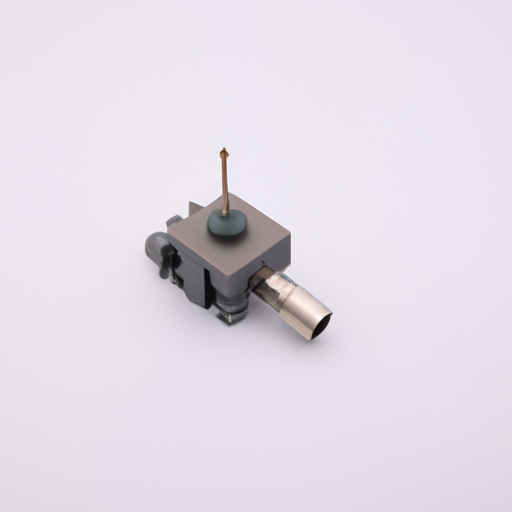
Overview of Thumbwheel Potentiometers: CFR-25JB-52-1R2Thumbwheel potentiometers, such as the CFR-25JB-52-1R2 model, are essential components in electronic systems, providing a user-friendly interface for manual adjustments of resistance and voltage levels. Their design and functionality make them suitable for a variety of applications across different industries. Below is a detailed exploration of their core functional technology and notable application development cases.
Core Functional Technology1. Basic Operation2. Construction3. Types4. Electrical Characteristics5. Durability and Reliability1. Consumer Electronics2. Industrial Equipment3. Medical Devices4. Automotive Applications5. Telecommunications Application Development Cases ConclusionThumbwheel potentiometers like the CFR-25JB-52-1R2 are vital components across various applications due to their ease of use, precision, and adaptability. Their ability to provide manual control over electronic systems makes them invaluable in consumer electronics, industrial machinery, medical devices, automotive applications, and telecommunications. As technology continues to advance, the integration of thumbwheel potentiometers in new applications is expected to grow, further demonstrating their effectiveness and versatility in modern electronic systems.

Application Development in Accessories for CFR-25JB-52-1M2: Key Technologies and Success StoriesThe CFR-25JB-52-1M2 is a specialized component, likely a type of connector or electronic accessory, utilized across various sectors such as aerospace, automotive, and industrial applications. The development of accessories for such components is driven by several key technologies and has led to numerous success stories that highlight innovation and efficiency.
Key Technologies1. Miniaturization 2. Smart Connectivity 3. Robust Materials 4. Modular Design 5. Wireless Technologies 6. 3D Printing 1. Aerospace Applications 2. Automotive Innovations 3. Consumer Electronics 4. Industrial Automation 5. Medical Devices Success Stories ConclusionThe development of accessories for components like the CFR-25JB-52-1M2 is characterized by the application of advanced technologies that address the evolving demands of various industries. Success stories from aerospace, automotive, consumer electronics, industrial automation, and medical devices underscore the importance of innovation in creating reliable, efficient, and adaptable solutions. As technology continues to advance, the potential for new applications and improvements in accessory development remains expansive, promising further enhancements in performance and functionality across multiple sectors.

Overview of CFR-50JB-52-1M2 Signal TransformerThe CFR-50JB-52-1M2 is a specific model of signal transformer that exemplifies the core functionalities and applications of signal transformers in modern electronic systems. This model is designed to meet the demands of various industries by providing reliable performance in signal isolation, impedance matching, and voltage transformation.
Core Functional Technology of Signal Transformers1. Electrical Isolation 2. Impedance Matching 3. AC Signal Coupling 4. Voltage Transformation 5. Frequency Response 6. Compact Design 1. Audio Equipment 2. Telecommunications 3. Data Communication 4. Medical Devices 5. Industrial Automation 6. Consumer Electronics Application Development Cases ConclusionThe CFR-50JB-52-1M2 signal transformer exemplifies the essential role of signal transformers in various applications, providing critical functions such as isolation, impedance matching, and signal coupling. Its compact design and effective performance make it suitable for a wide range of industries, including audio, telecommunications, medical, and industrial automation. As technology continues to advance, the demand for efficient and reliable signal transformers like the CFR-50JB-52-1M2 is expected to grow, driving further innovations in this field.

Application Development in Adjustable Inductors for MM74HC374N: Key Technologies and Success StoriesAdjustable inductors, while often overshadowed by other components in digital circuits, play a crucial role in specific applications, particularly in RF (radio frequency) and analog circuits. The MM74HC374N, a high-speed CMOS octal D-type flip-flop, is primarily utilized in digital applications. However, the integration of adjustable inductors with such digital components opens up a range of possibilities. Below, we explore key technologies and notable success stories in this domain.
Key Technologies1. Variable Inductors2. Integrated Inductor Technologies3. RF and Analog Circuit Design4. Simulation and Modeling Tools5. Control Systems1. RF Transceiver Design2. Wireless Communication3. Consumer Electronics4. Automotive Applications5. Medical Devices Success Stories ConclusionWhile the MM74HC374N is primarily a digital component, the integration of adjustable inductors in various applications significantly enhances the performance of systems that require both digital and analog functionalities. The key technologies surrounding adjustable inductors, along with successful implementations in RF, consumer electronics, automotive, and medical fields, underscore their importance in modern application development. As technology continues to advance, the synergy between adjustable inductors and digital components like the MM74HC374N is likely to foster even more innovative solutions, paving the way for enhanced performance and functionality in diverse applications.

Core Functional Technology of Fixed Inductors1. Inductance: The primary function of a fixed inductor is to store energy in a magnetic field when electrical current flows through it. The inductance value, measured in henries (H), determines the amount of energy that can be stored. For the CFR-25JB-52-1K2, the inductance is specified at 1.2 µH, making it suitable for high-frequency applications.
2. DC Resistance (DCR): This is the resistance encountered by direct current flowing through the inductor. A lower DCR is desirable as it reduces power loss and improves efficiency. The CFR-25JB-52-1K2 features a low DCR, which is critical for applications requiring high efficiency. 3. Saturation Current: This parameter indicates the maximum current the inductor can handle before the core material saturates, which leads to a significant drop in inductance. For the CFR-25JB-52-1K2, understanding its saturation current is essential for applications that may experience high inrush currents.
4. Self-Resonant Frequency (SRF): The frequency at which the inductor's reactance equals its resistance, causing it to behave like a capacitor. The SRF is crucial for avoiding unwanted resonances in high-frequency applications. The CFR-25JB-52-1K2 is designed to operate effectively within specific frequency ranges.
5. Temperature Coefficient: This indicates how the inductance value changes with temperature variations. A stable temperature coefficient is important for applications that operate in varying thermal environments, ensuring consistent performance.
Applications of Fixed Inductors1. Power Supply Filtering: Fixed inductors are widely used in power supply circuits to filter out high-frequency noise, ensuring a stable DC output. The CFR-25JB-52-1K2 can be employed in DC-DC converters to smooth out voltage fluctuations.
2. Energy Storage in Switching Regulators: In buck or boost converters, inductors like the CFR-25JB-52-1K2 store energy during the switching cycle, allowing for efficient voltage regulation and energy transfer.
3. RF Applications: In radio frequency circuits, fixed inductors are used in tuning circuits, matching networks, and filters to select or reject specific frequency bands, enhancing signal clarity and performance.
4. Signal Processing: Inductors can be utilized in audio and signal processing applications to filter out unwanted frequencies, improving overall signal quality and fidelity.
5. Motor Drives: In motor control applications, fixed inductors help manage current flow and reduce electromagnetic interference (EMI), contributing to smoother operation and increased reliability.
Development Cases1. Power Management ICs: In the development of power management integrated circuits (PMICs), fixed inductors like the CFR-25JB-52-1K2 are used to optimize efficiency and thermal performance in battery-powered devices, such as smartphones and tablets.
2. Telecommunications: Fixed inductors are integral in designing filters for telecommunications equipment, ensuring signal integrity and reducing noise, which is critical for maintaining communication quality.
3. Consumer Electronics: In devices such as laptops and gaming consoles, fixed inductors are used in power supply circuits to enhance battery life and performance, allowing for longer usage times and improved user experience.
4. Automotive Applications: With the rise of electric vehicles (EVs), fixed inductors are used in power electronics for efficient energy conversion and management, playing a vital role in the performance of EV powertrains.
5. Industrial Automation: In automation systems, fixed inductors are used in control circuits to ensure reliable operation of sensors and actuators, contributing to the efficiency and reliability of industrial processes.
ConclusionThe CFR-25JB-52-1K2 fixed inductor exemplifies the essential role of inductors in modern electronics. Understanding their core technologies and applications can lead to more effective designs and innovations across various fields, from consumer electronics to industrial automation. For specific articles and case studies, it would be beneficial to consult technical journals, manufacturer datasheets, and industry publications that focus on inductor technology and applications. This knowledge can help engineers and designers leverage the capabilities of fixed inductors to enhance their products and systems.


lang_service_time
lang_select_kefu
Yeonsin Lian












